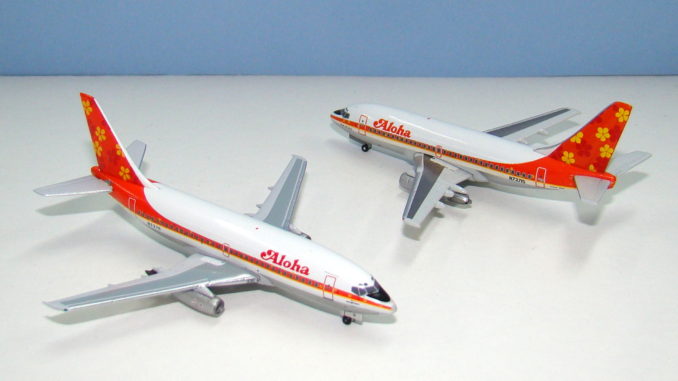
Aloha was Hawaiian Airlines great competitor for over 50 years and at various points either player was on top. Finally Aloha succumbed to competition primarily from Mesa Airlines’ ‘go!’ branded regional jet operation, which unfairly used information it had acquired from Chapter 11 proceedings to enter the Hawaiian market. It was sad to see people choose these fly by nighters rather than the airline, which had served their communities for so long. Anyway Aloha hasn’t got the love it deserves in 1/400 either and there have been several of its liveries missing. Aeroclassics last month released 4 Aloha 737s and in this entry we take a look at one of them and let it go head to head with the Gemini Jets release, which admittedly is from 2001. Even so Gemini still use this same 737-200 mould today so the comparison is a valid one.
THE REAL THING
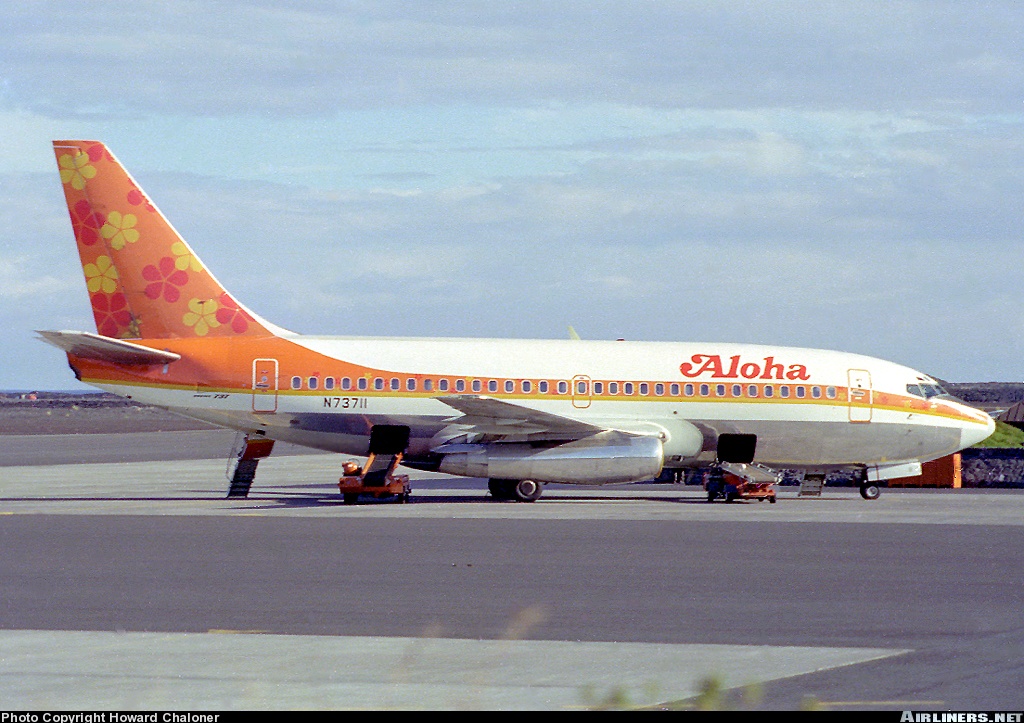
Aloha’s first pure jet equipment was actually the British BAC One-Eleven, however in April 1969 they switched their fleet over to the new Boeing 737-200 and the type became the backbone of Aloha’s fleet for over 40 years. N73711 was the first of three 737-200s delivered new to Aloha in 1969 (a fourth was not taken up and joined NAC of New Zealand). The new 737s were named after kings with this frame becoming ‘King Kalaniopuu’. Aside from a summer lease to AirCal in 1981/82 she served with Aloha for nearly twenty years until she infamously suffered a major structural failure. On April 28, 1988 whist operating an inter-island flight the forward cabin roof was ripped off the aircraft killing a stewardess and necessitating an emergency landing in Kahului. By that point the aircraft had over 89,000 cycles and the frequent pressure changes had caused structural weakening in the airframe.
During the 70s Aloha leased several extra aircraft at various times to join the owned series 200s. These included three series 100s. N73715 was named ‘King Lunalilo’ and had originally been delivered to Avianca as HK1403 in Nov 68. Used by the Luftwaffe for a year in 1971 it spent 6 years with Boeing as N1780B before its lease to Aloha. In 1978 it joined Air California as N472GB and passed into the American fleet in 1987 after the takeover for a few months. A lease to Faucett didn’t complete and instead she was stored and scrapped at Mojave in 1996.

Even though N73715 was actually a 737-159 Gemini Jets used their 737-200 mould for it. God knows why this was when they could have chosen one of the series 297s instead, but they did. Anyway it means that in this comparison the aircraft and livery combination are the same even though in real life they were not.
THE MODELS
The format for my reviews is to split them into three key areas:
- The mould of the aircraft
- The paint and livery
- Printing and quality control
Each can get a maximum score of 10 for a section giving a maximum combined total score of 30.
THE MOULD

It might seem a little unfair comparing one of the oldest 1/400 scale moulds (the Gemini 737-200) to a much newer version from Aeroclassics, however Gemini saw fit to produce a new Pan Am release on this old mould (albeit with aerials fitted) in 2016 so I think it is still a fair comparison. Nonetheless it is still a very uneven one.
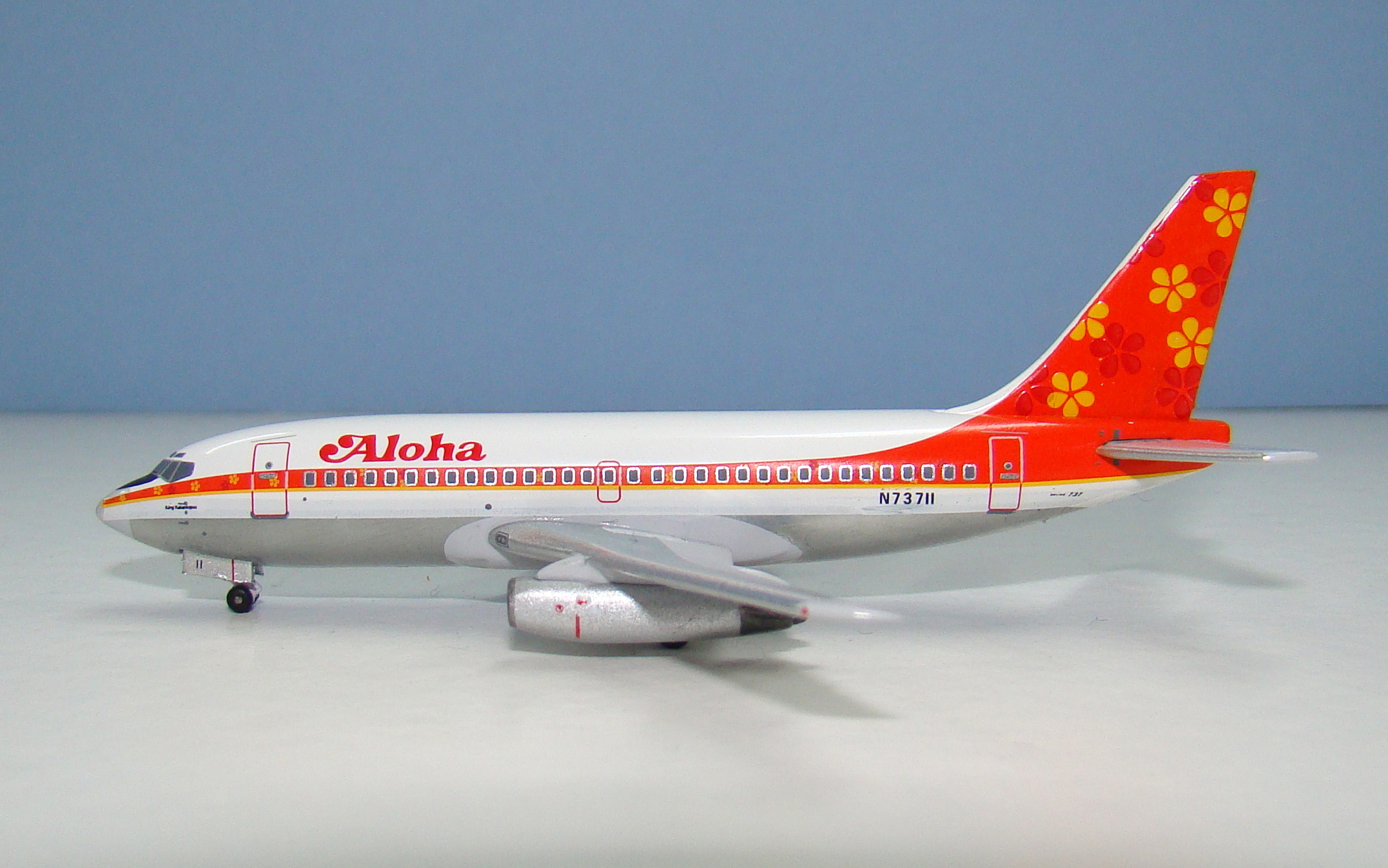
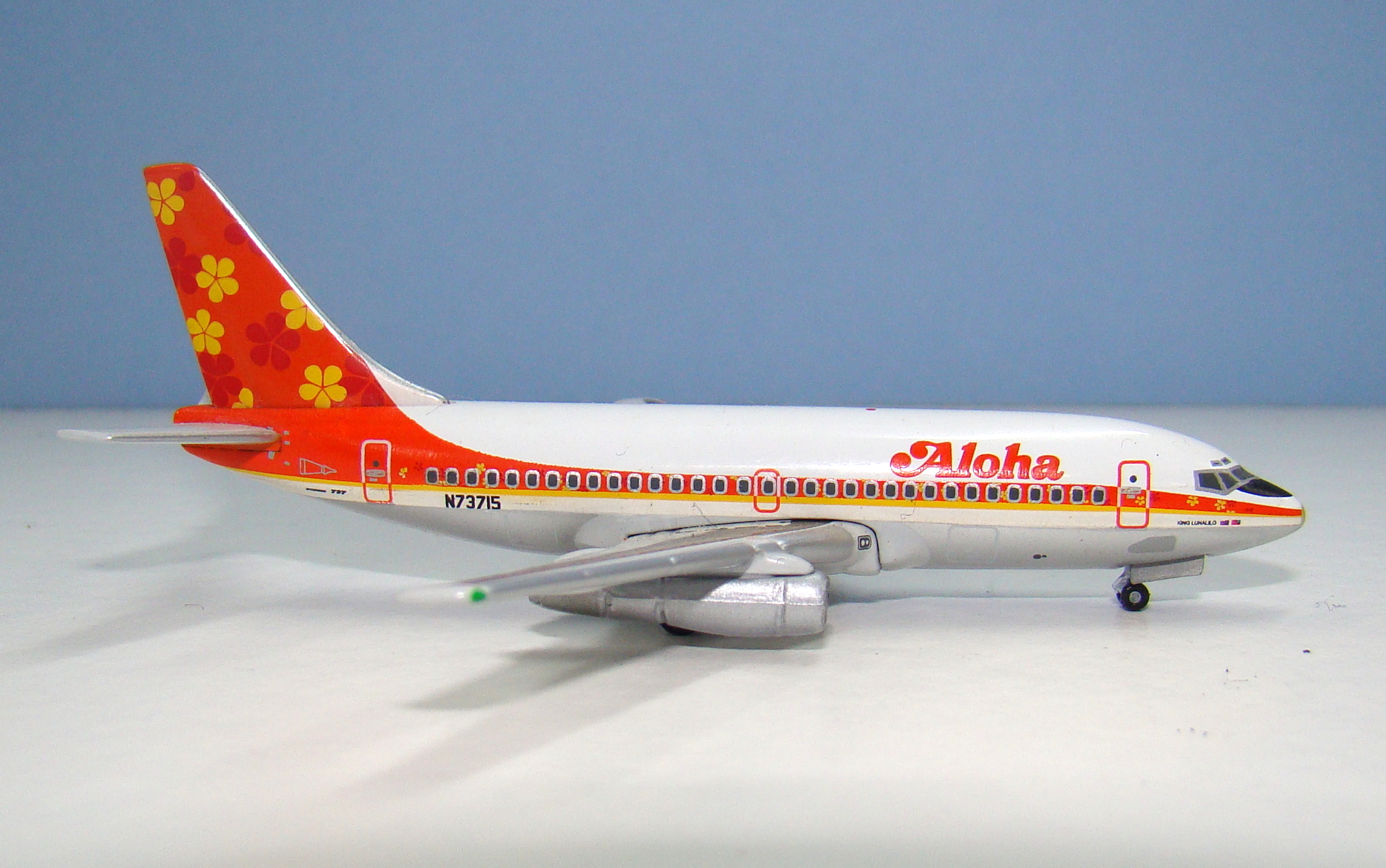
The Gemini mould has two seams (the wing join and the horizontal stabilizers), however both are low key and fit tightly so I don’t really see them as major issues. The Aeroclassics mould, dating from 2009, is seamless with slot in wings. The shape and size of the vertical stabilizer and rear fuselage of both moulds is good, though lacking the rear seam the Aeroclassics has the ability to slot in the notch for the APU.
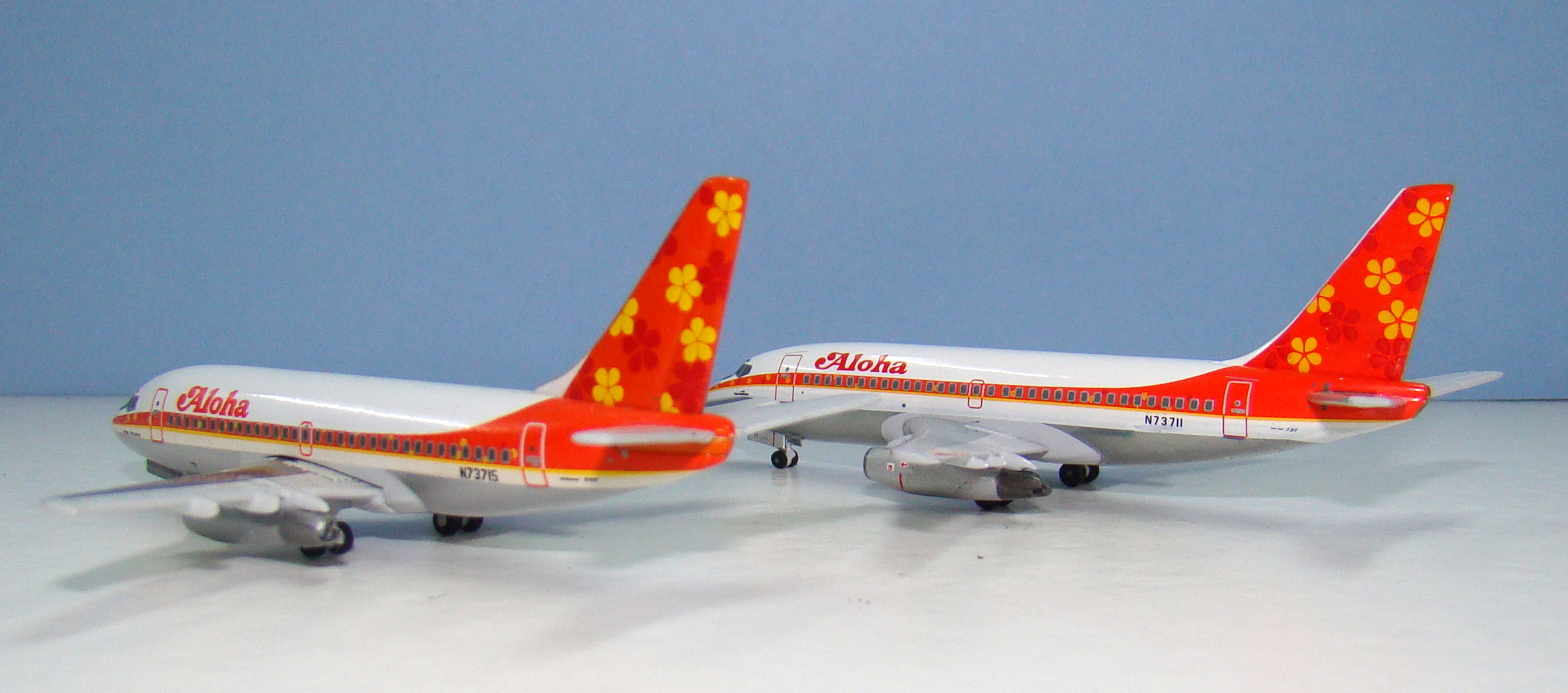
The wings on both moulds are fine, though the detailing is finer on the Aeroclassics. There is a major divergence at the engines where the Aeroclassics are the smooth barrels of the real thing and the Gemini’s look like four separate differently sized tubes stuck together with deep score marks going around them. The Gemini engines are quite inaccurate.

The biggest difference is not the engines however but the nose region. The nose of the Gemini mould is too long and rounded with a seemingly too high forehead. The shape of the Aeroclassics mould is near perfect at the nose. Sometimes the nosegear doors can look a little large but I don’t think so on this model. The landing gear on the 737-200 is very short so the older gear style of the Gemini is not shown up too much, in fact you could argue the hubcaps are better. In close up however the Aeroclassics gear legs are better detailed.
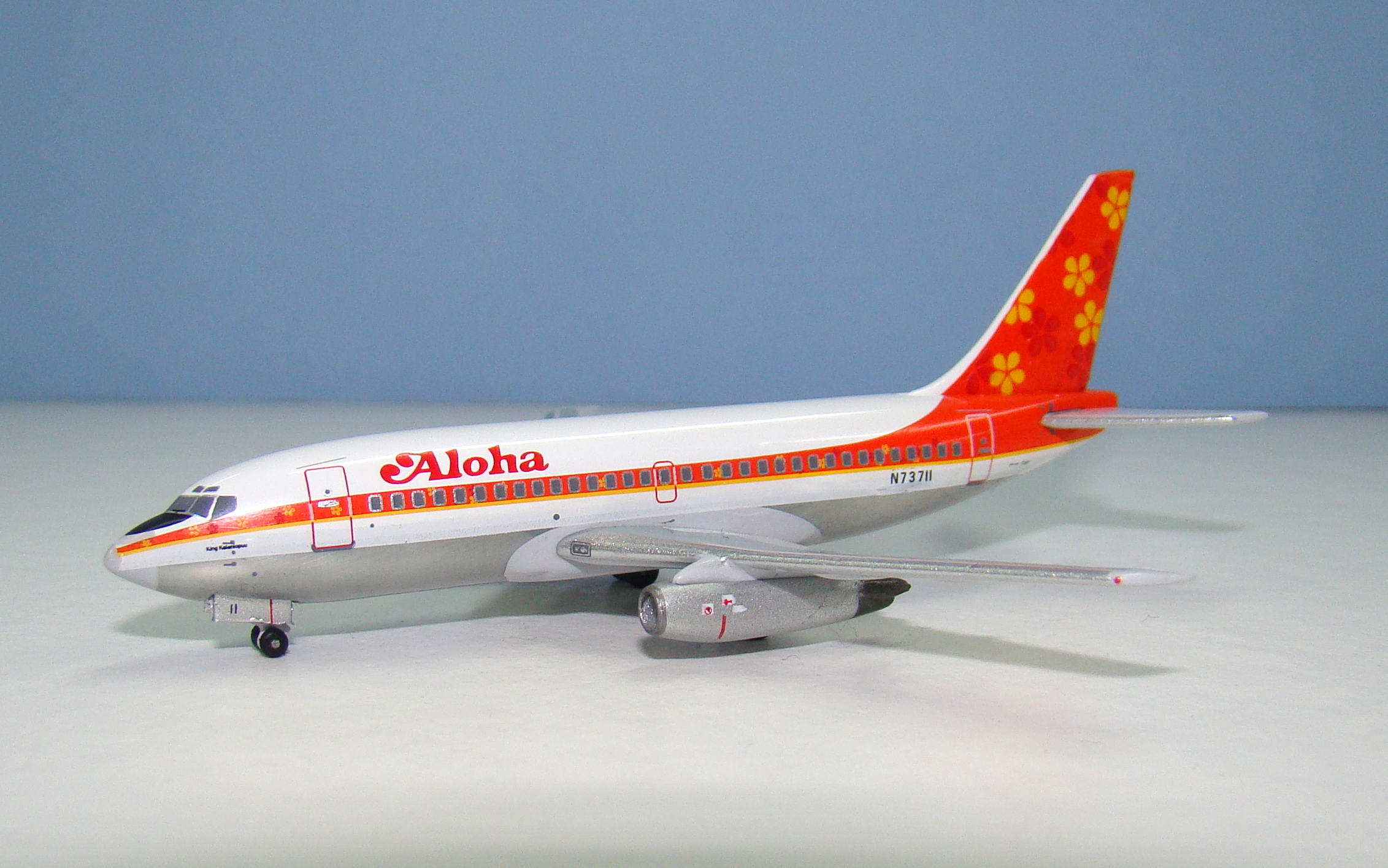
For an old mould the Gemini 737-200 is perfectly reasonable, but it cannot compare to the newer Aeroclassics mould as it has a markedly inferior nose, engines and seams. Even putting aerials on it as Gemini now has doesn’t do anything to elevate it above the competition. The incorrect nose shape of the Gemini often has a flow on impact on printing and the engines are ugly. The 2009 Aeroclassics mould is almost perfect and probably the best 737 of any mark in 1/400 (except for possibly the Panda 737MAX).
AEROCLASSICS SCORE – 10
GEMINI JETS SCORE – 5
PAINT & LIVERY
The first thing I should mention with this 1970s Flower Power scheme is that it was NOT the delivery livery. The first 737 scheme had a similar tale but the flowery orange cheatline was straight and didn’t join up with the vertical stabilizer. Also the airline titles were complete ‘ALOHA AIRLINES’ in black and with the bird of paradise logo next to them on the rear of the aircraft. There was also ‘FUNBIRD’ titling on the engines. I hope to see these colours in 1/400 scale someday.

Anyway the livery on both these models is the 1970s scheme with the joined cheatline and tail plus new ‘Aloha’ titles in orange and no ‘FUNBIRD’. Looking at both the liveries and broadly the colours appear correct. The only point of clear difference is the titles, which are darker on the Aeroclassics – almost red. Certainly the titles on the real thing do look darker than the cheatline but I think maybe Gemini has got the colours a little closer and the Aeroclassics are a little too dark.
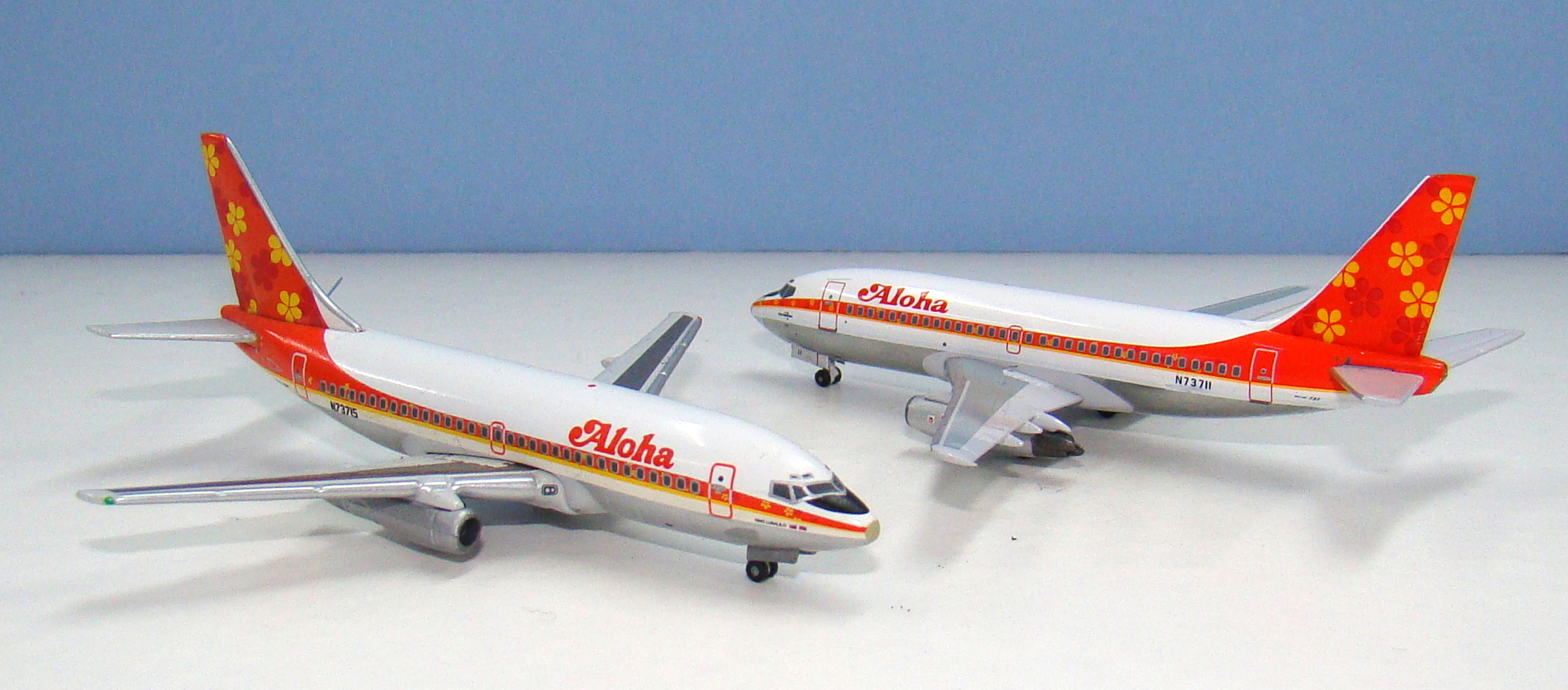
Looking at the livery details themselves as you’d expect the newer Aeroclassics has a better reproduction. The petals on the tail of the Gemini are a little too large, which means those near the tip and base of the tail are not quite fitting on the vertical stabilizer correctly. Placement of the petals on the Aeroclassics tail is fine although there is some colour bleed where they overlap.
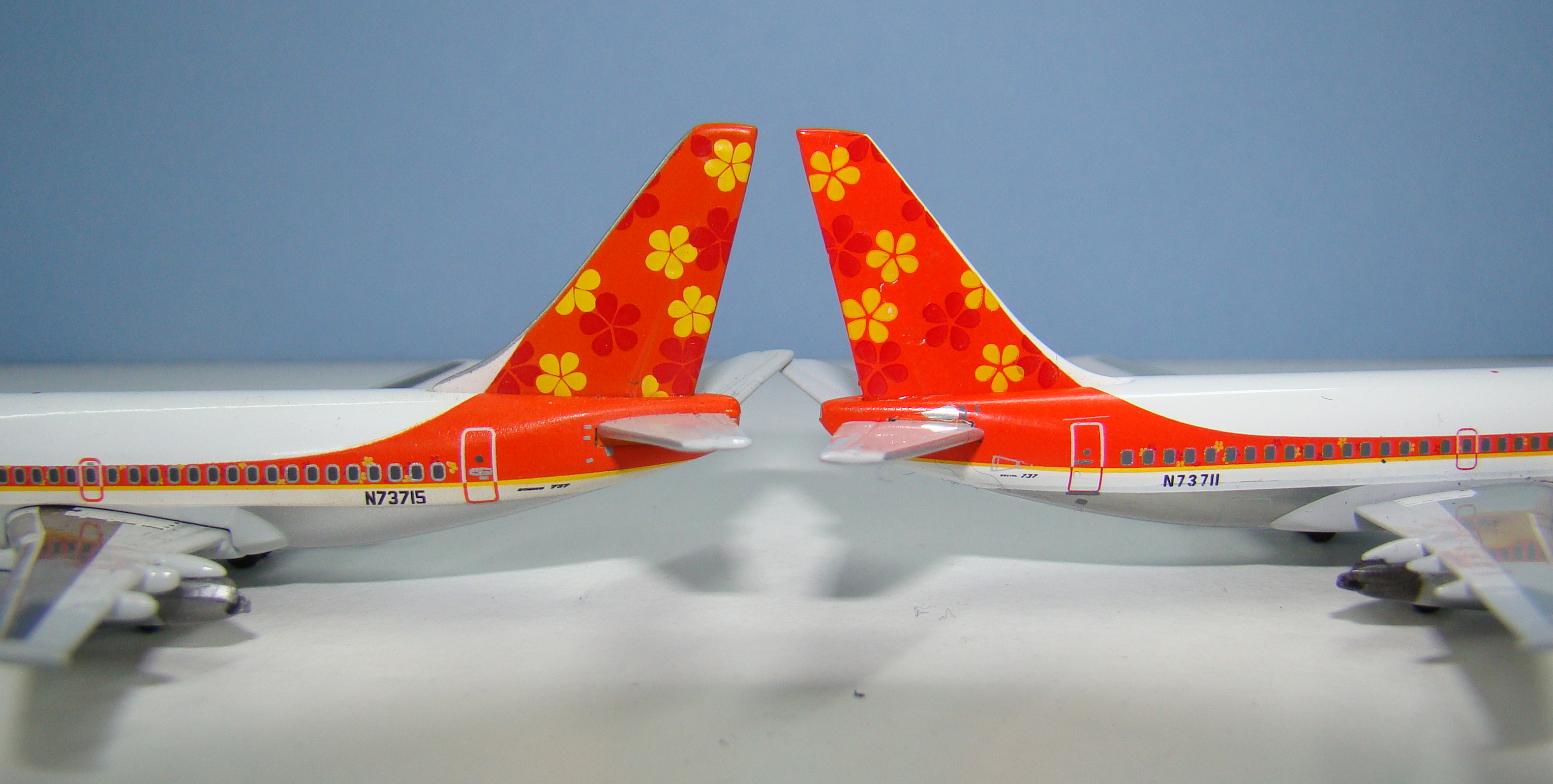
The cheatlines of the livery are generally fine (we’ll talk about their placement in the printing section) and the Aeroclassics version has the small petals in the correct places. The Gemini release does not have the petals always correctly placed, which is most obvious near the front and rear doors. The titles also show some variance. The Gemini titles are a little chunky, while the Aeroclassics title characters are not always correctly shaped.
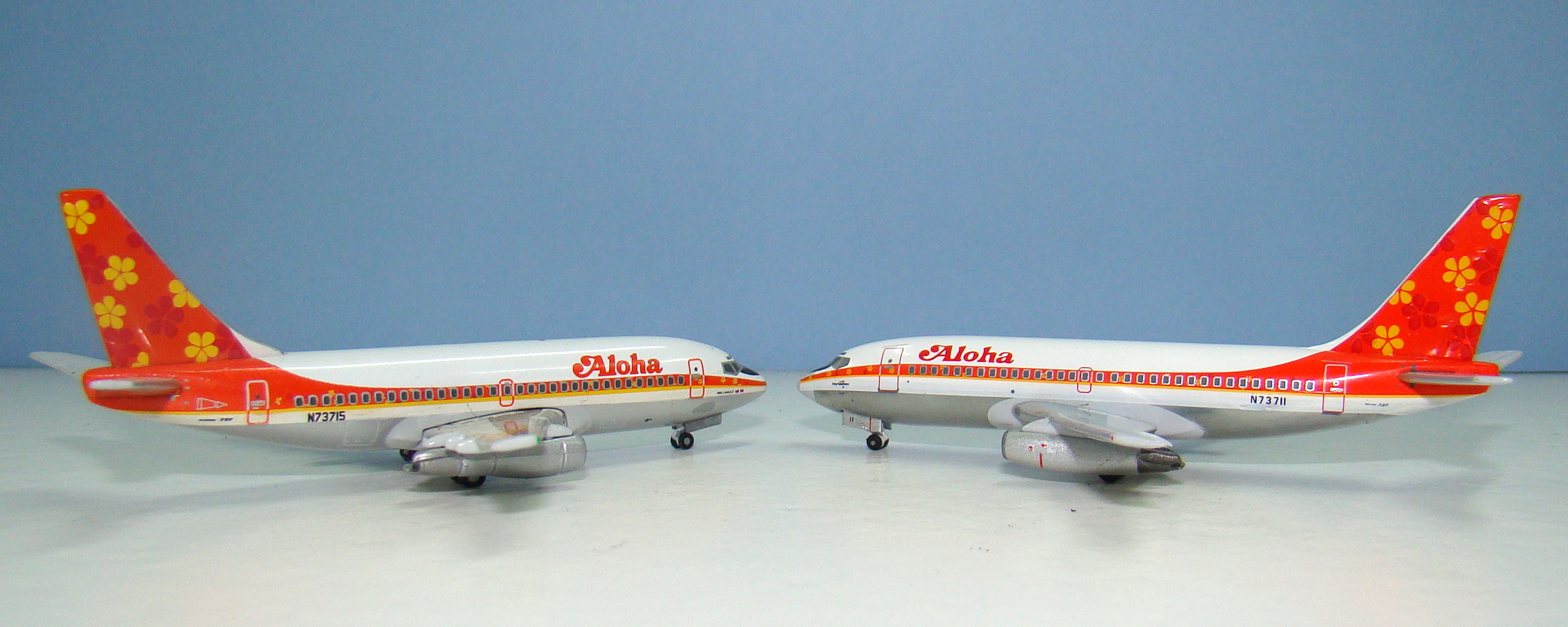
As always it’s a trade-off between the two models. Aeroclassics colours are a little off, but not heavily, whereas the print design is less accurate with the Gemini. Neither gets the titles perfect. I think we’ll call this round a draw.
AEROCLASSICS SCORE – 8
GEMINI JETS SCORE – 8
PRINTING & QUALITY CONTROL
As you’d expect the printing quality of older models is inferior to newer ones, however perversely they are often better constructed, partly because they are more solid and simpler. In terms of detail the printing on the Gemini is good. My biggest detail criticisms are the missing nosegear number, thick cockpit rims and that the registration is printed a little too thick and close to the metal belly. Unfortunately this later point leads me onto the worst part of the model, the printing position. The printing of the entire cheatline is too low, which also means the cockpit windows and anti-glare shield are also printed too low. It makes the whole model look a little weird and I have to admit I’ve been itching to replace this old 737 for years now. This print issue is not just present on this Gemini 737 and I have noted it on other versions also. I think the incorrect nose moulding assists in its unfortunate reproduction.
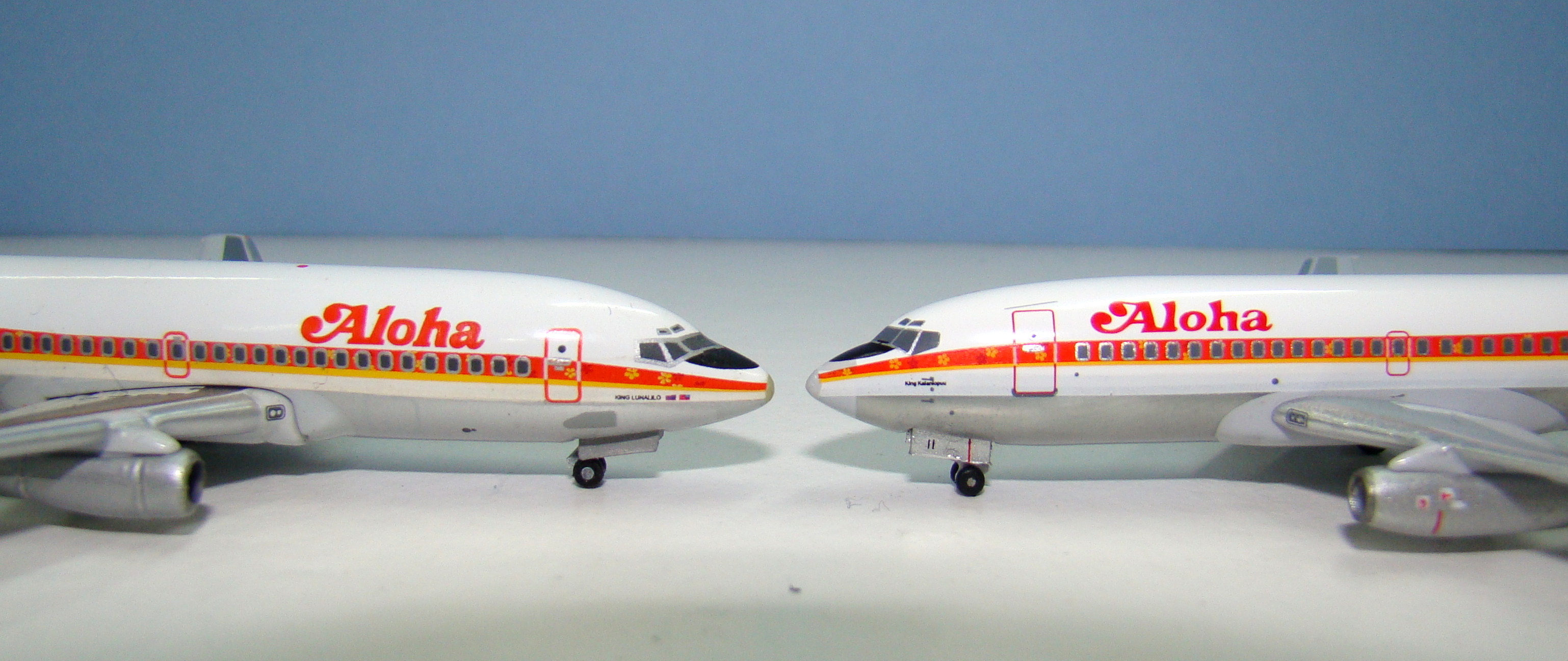
Fortunately Aeroclassics has the printing position correct, which makes the whole model look very good. The registration is well reproduced with thin lettering and clear white space between it and the silver belly, which is a much brighter shiny silver than on the Gemini. Other printing is also superior with the nosegear rego apparent unlike on the Gemini.
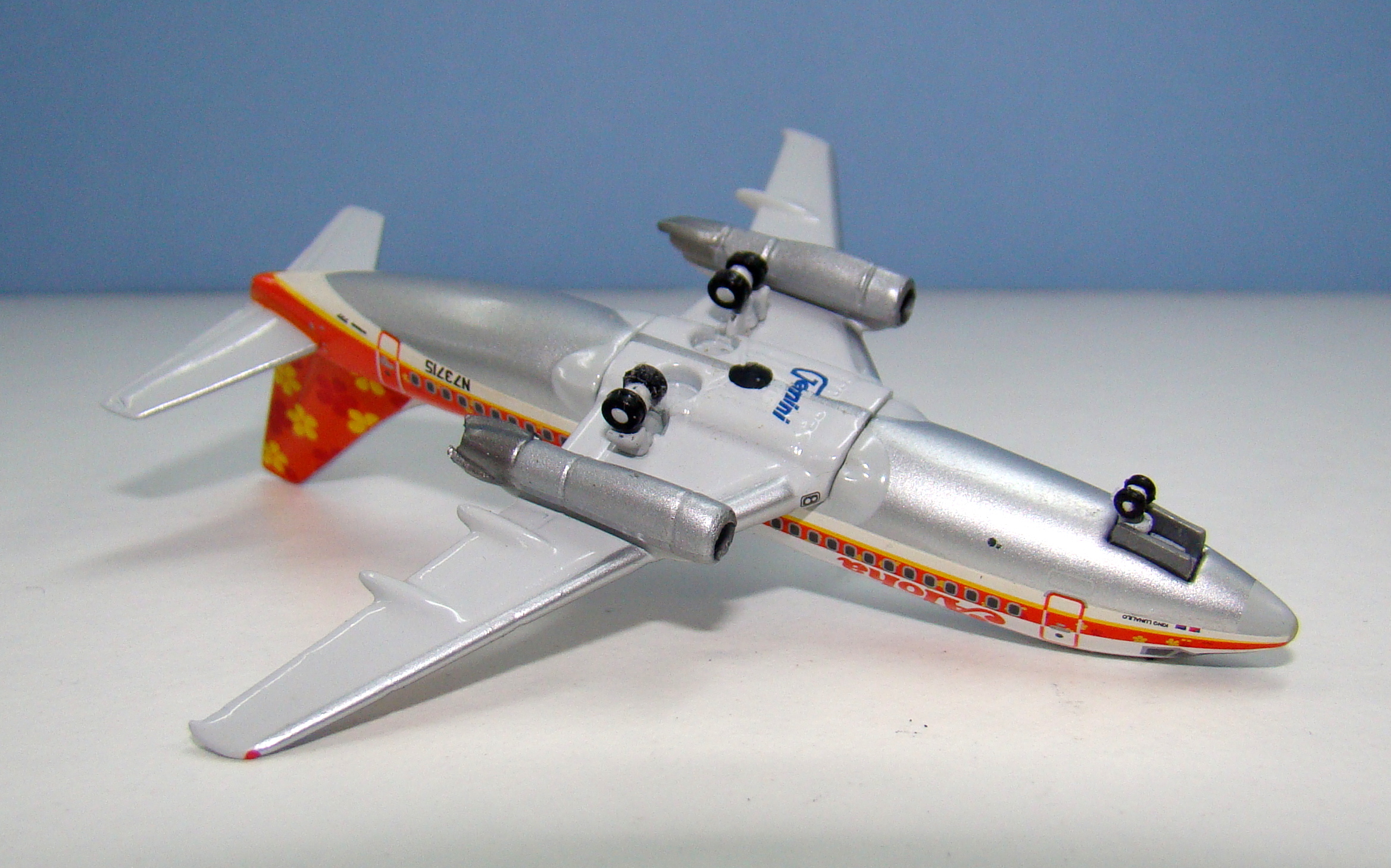
Gemini Jets 1:400 Scale Model Airliner
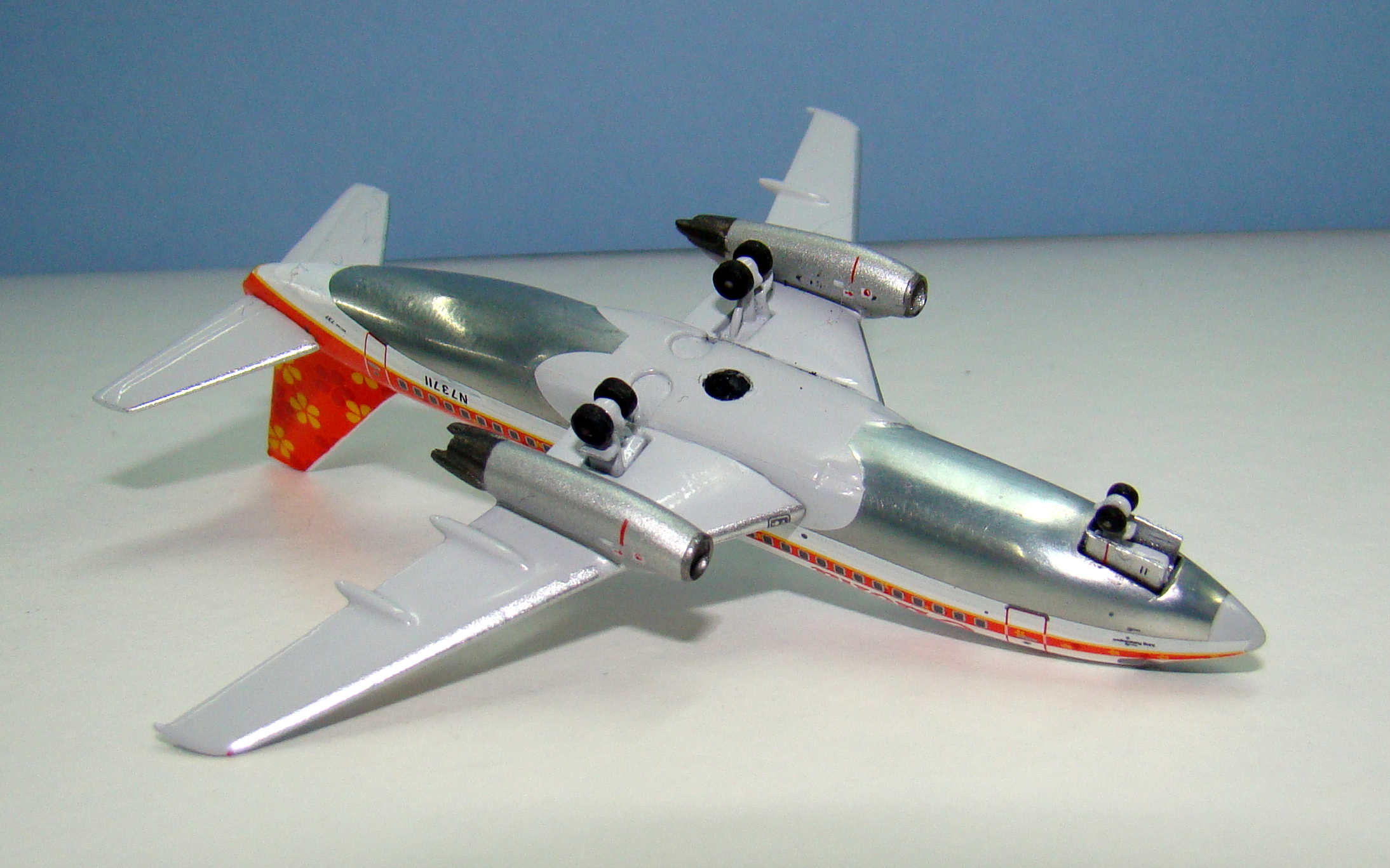
Aeroclassics 1:400 Scale Model Airliner
The Gemini model has been perfectly put together. Even after 16 years and at least two owners it looks perfect. It’s a good solid reliable easy to build older generation 1/400. The Aeroclassics 737 is not perfectly put at all. This is not the first Aeroclassics 737-200 that has arrived with the wing separated. Fortunately on this model there is no damage to the livery and the wing can easily be placed into its slot with a good fit. Unfortunately the starboard horizontal stabiliser is also not assembled correctly and here where it has moved there is some damage to the printing. This is very disappointing and it isn’t what I expect from a new model. I don’t think this is a postage issue (as this model came with 7 others) and it shows a lack of care, which has been all too common from Aeroclassics this year.
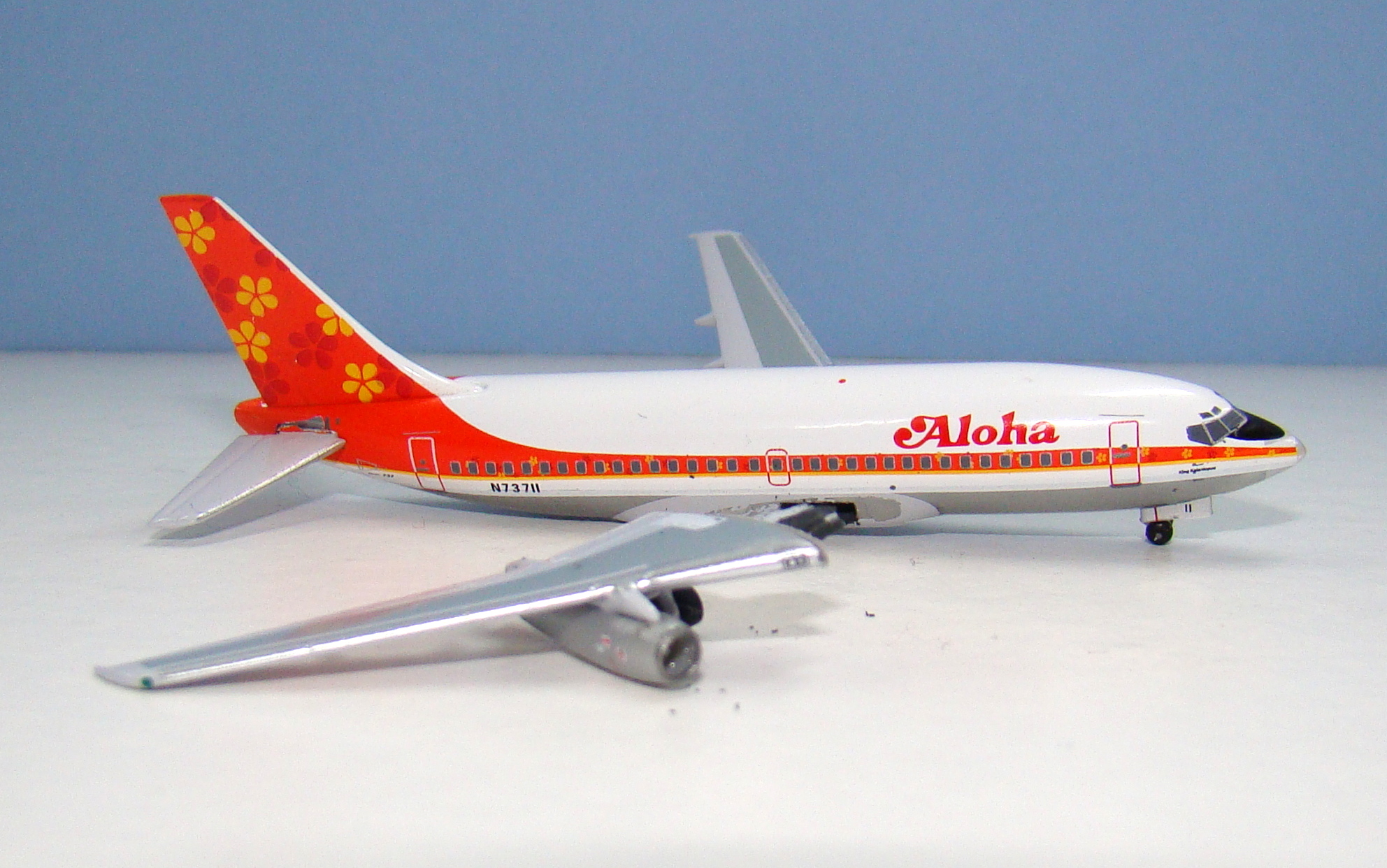
The Aeroclassics would score perfectly in this section if not for the detached wing and stabiliser, they come close to ruining the entire model. Even though the Gemini is well put together the printing is poor, although the actual print quality is good. Since the latter effectively ruins the model this is not a positive thing.
AEROCLASSICS SCORE – 5
GEMINI JETS SCORE – 5
CONCLUSION
As you would hope the newer Aeroclassics is superior to the older Gemini Jets, however the comparison does bear some fruit for analysis from both sides. Aeroclassics continue to produce colour inaccuracies (although in this case the difference is minor) and in 2017 are suffering from an unusual quality control blip. The Aeroclassics 737 would score almost perfectly if the wing and stabiliser had been attached properly. Gemini meanwhile have a selection of old first generation moulds, which they still use, but are not competitive. Nonetheless older Gemini models, even in 2017, usually come well built and with good printing (the placement issue on this model is unusual). Therefore buying older Gemini Jets releases is not a bad idea at all.
FINAL SCORES
AEROCLASSICS SCORE – 23
GEMINI JETS SCORE – 18


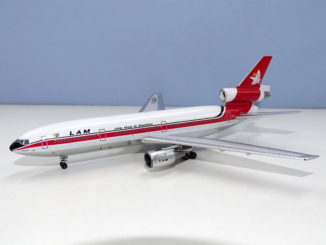
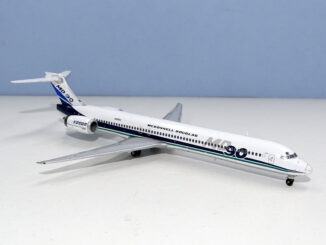
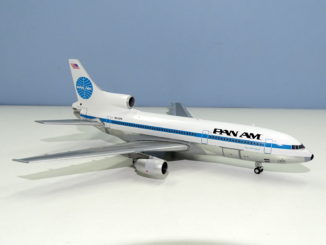
Aeroclassics appears to have applied the white paint a bit too thinly over the bare metal below the cheatline, as there is a very visible ‘shadow’ in the white paint for about a 16/th inch above the bare metal. (Your photos show it very clearly.) On my example, there was a noticeable flaw through the paint just ahead of the portside door. Aeroclassics, of all manufacturers, should be more careful about this sort of thing.
Jim